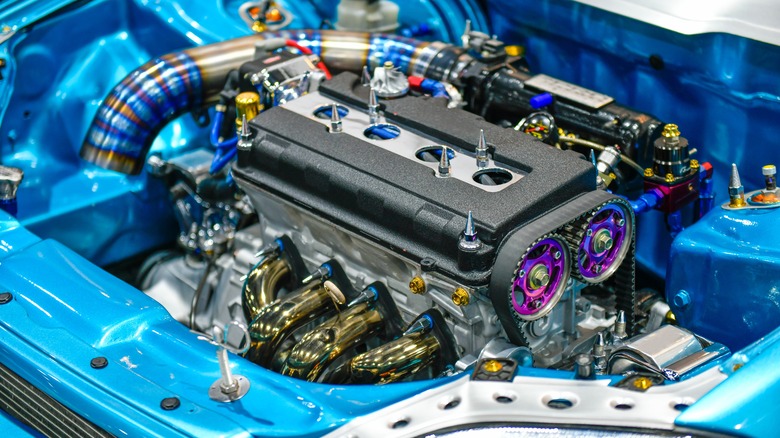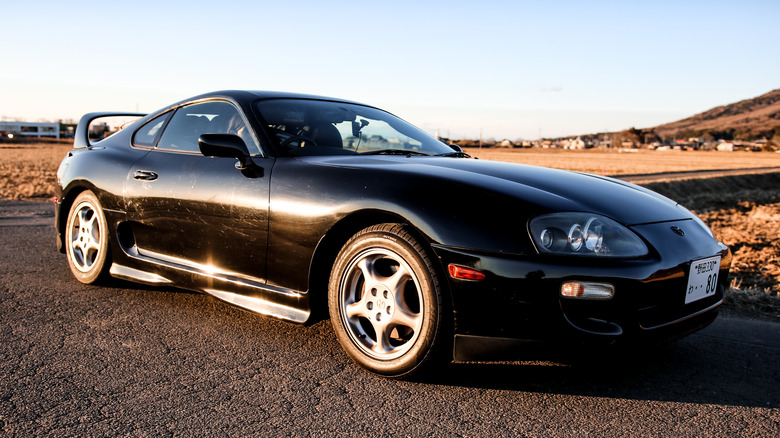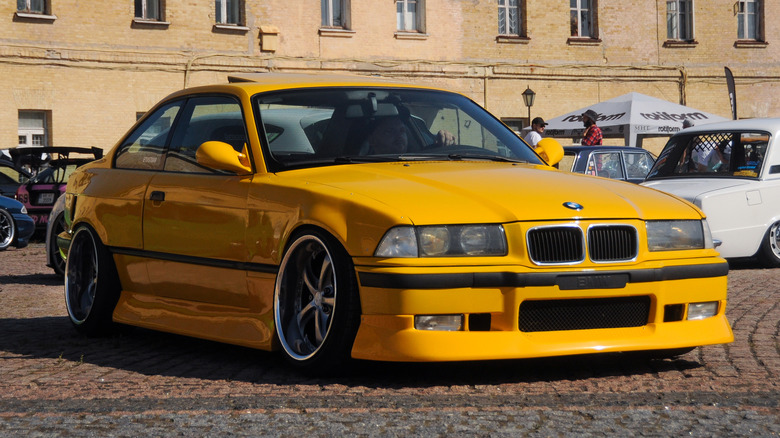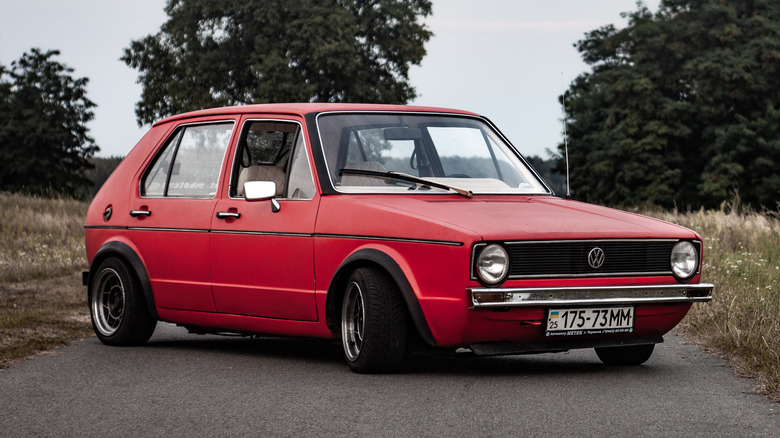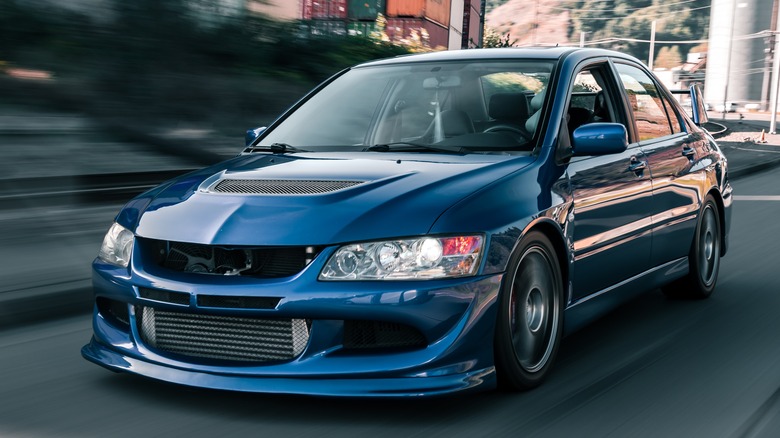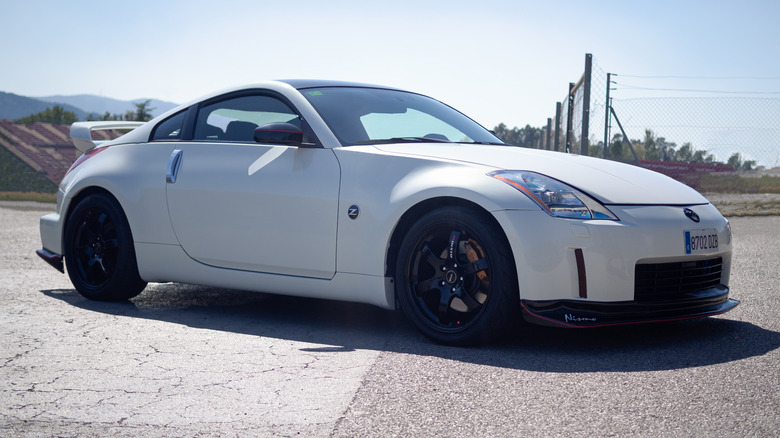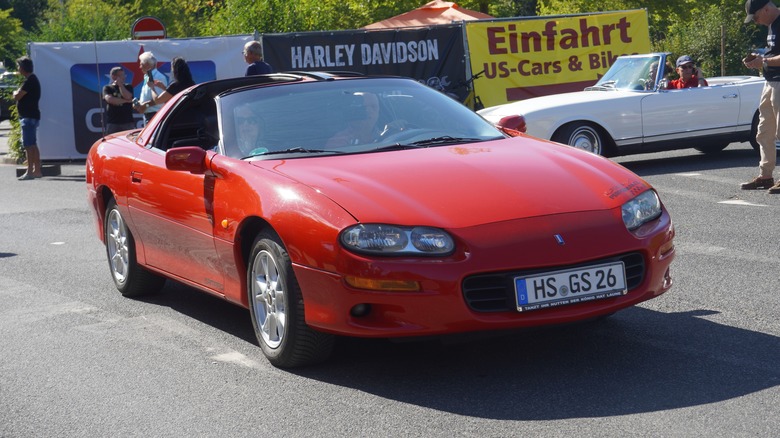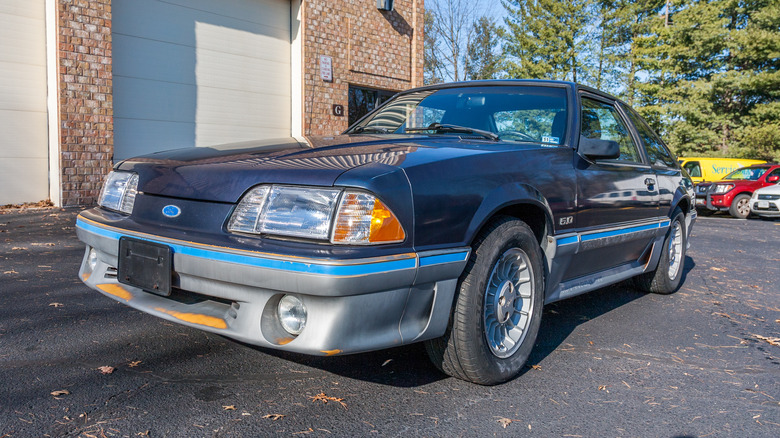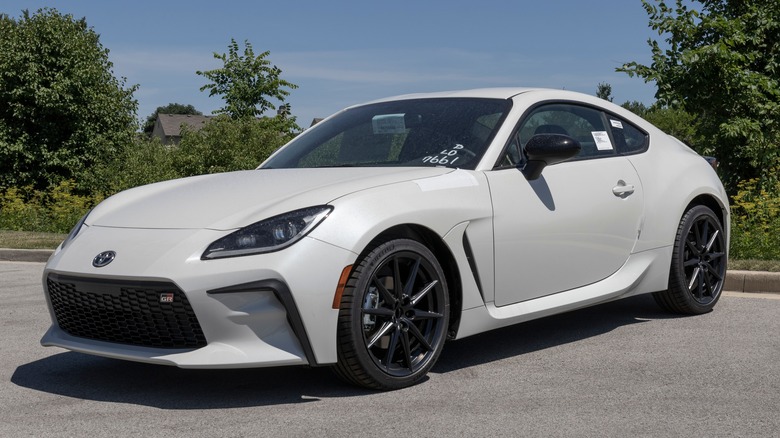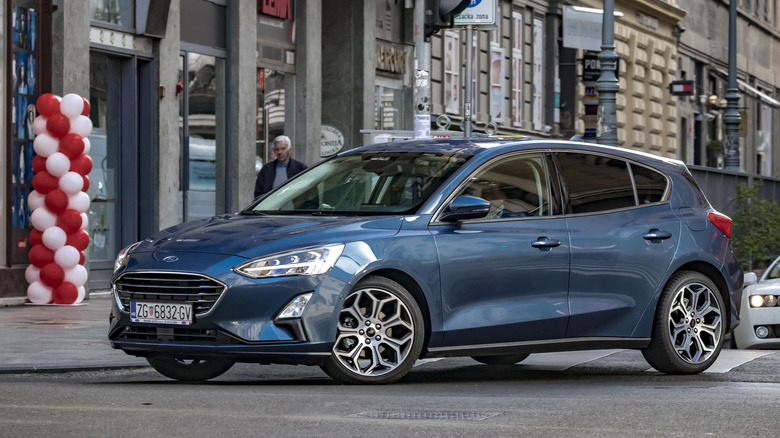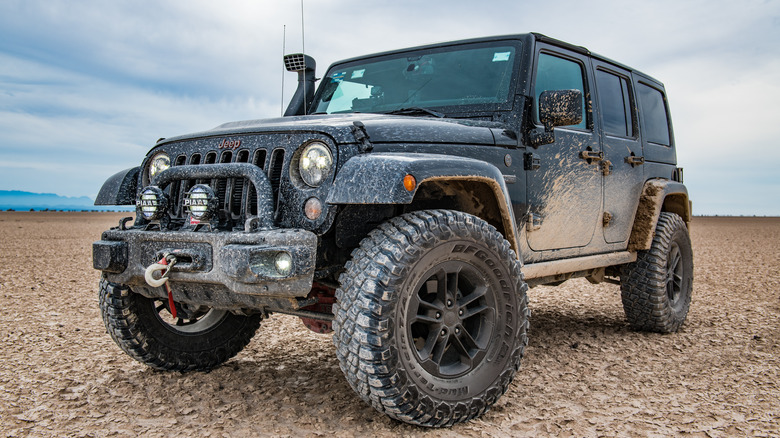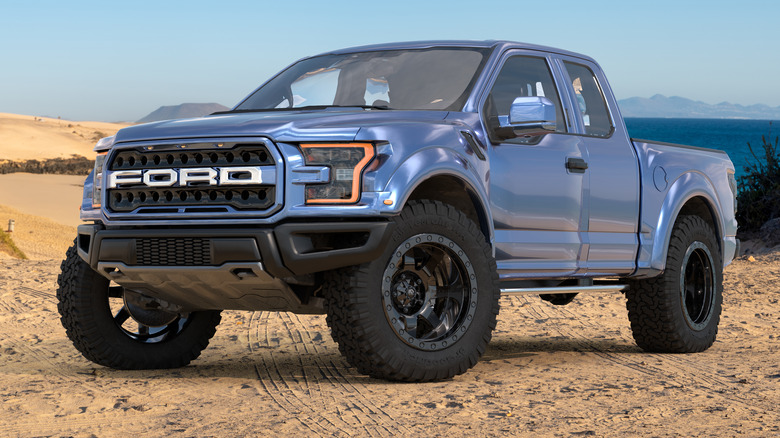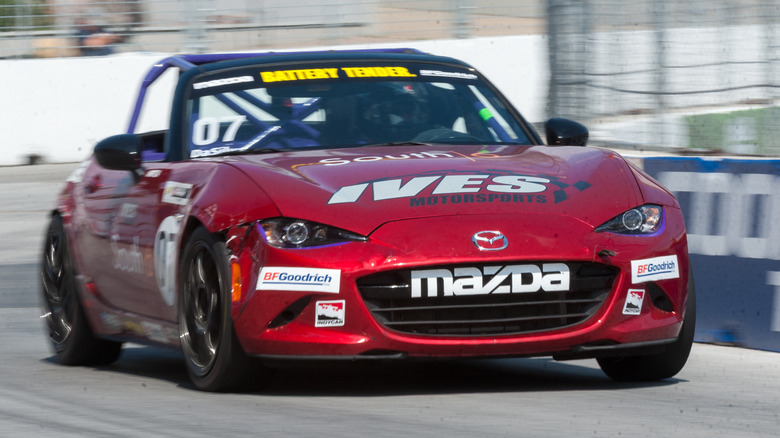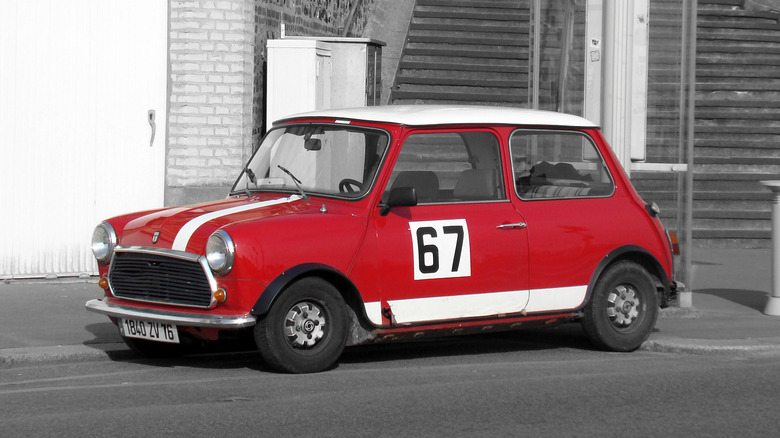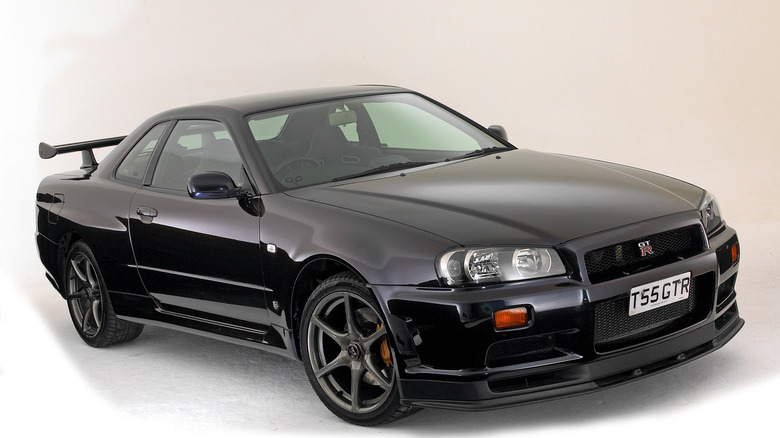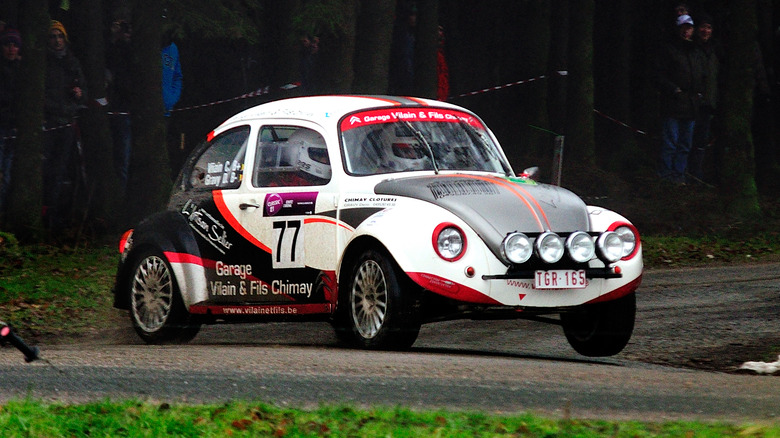The 15 Easiest Cars To Mod, Ranked
The idea of picking up a car as a project to modify and customize with personal flourishes is a goal of many, especially those with mechanical aptitude. Despite the amount of work and hard physical labor involved, completing jobs on a project car can be quite gratifying and enjoyable. Project cars require a commitment of both time and money, and no two projects are alike. Furthermore, custom cars can go in many directions and the work can be done to attain a variety of differing goals. Some people just want their car to go fast. Some want a car that looks great. Others want both. Depending on what is envisioned for the final outcome, upgrades can range from modest improvements to total restoration.
Of course, the first part of a project car is to obtain the car itself. Buying the right car is usually the most expensive part of the build, but not always. Full restorations and customizations are exceedingly expensive, especially if you are not doing the work yourself. Therefore, picking a car that can be upgraded to your liking without becoming an overwhelming and never-ending project is key. Obscure models without large fanbases can be tough to source parts or upgrade kits for, and will likely encounter too many roadblocks for all but the most experienced technicians. Finding something for which there are ample parts and plenty of information should be a prime consideration. Therefore, ranked in order of decreasing difficulty, we present a dozen of the easiest cars to mod.
Toyota Supra
Historically, Toyota has never been known for being a purveyor of fast cars. However, when Toyota commits to creating something, it is usually executed with precision. Such is the case with its Supra sports car. Originally a trim level of Celica, it later became a stand-alone model and developed into the Mark IV Supra, made famous in the "Fast and Furious" movie series. Since then, it has been elevated in status on par with Italian supercars and its value has grown to absurd levels. The main reason for its desirability is the incredible stout cast-iron block 2JZ inline-six engine that, according to MotorTrend, is capable of handling up to 2,000 horsepower.
The value of the Supra means may be moderately easy, but it won't be cheap. While the stock 300 horsepower engine can be made to produce much more, The Motorhood says the sequential turbos and fuel delivery systems are the first limiting factors that need to be addressed. Since the stock ECU is not made to easily accept upgraded tuning, a "piggyback" ECU can be installed inline to modify performance variables. With the new ECU, the twin-turbo setup can be changed in favor of a single turbo with more flexibility, such as a Garrett GT3582R. The next possible mods include high-flow injectors, upgraded air intake and manifold, and cat-back exhaust. If done properly, your 2JZ could see as much as 700 horsepower without ever cracking open the engine.
BMW 3-Series
Dozens of companies from all over the globe produce aftermarket parts for the BMW 3-Series. Speaking specifically about the E36 model from the '90s, you will find no shortage of performance and appearance upgrades. Mods can be had for most any year 3-Series, but the E36 presents fewer complex electronics, and general replacement parts will still be easier to find than older cars. These are still technically advanced vehicles and they will require skilled and experienced techs to do major upgrades, but the possibility of accidentally destroying expensive electronics in the process is still lower.
Powered by a stout inline 6-cylinder engine, the 3-Series is a good candidate for performance upgrades. BMW Tuning notes that the car's near 50/50 weight distribution, low overall weight, and the durability of its engine makes it a great track car and offers suggestions on how to get more performance out of it. Some of the easiest and most cost-effective upgrades are installing a cat-back exhaust, cold-air intake, and tuned ECU chip. After those installations, suspension upgrades such as coilover springs and polyurethane bushings will improve handling and stiffen the suspension for tight cornering. Most of these jobs can be done in an afternoon at home and should offer measurable performance improvements for a reasonable cost.
VW Golf
Volkswagen's follow-up to the immensely successful Type I Beetle, the Golf, proved that VW could successfully update and modernize its cars with all-new water-cooled and front-wheel-drive engines. The introduction of the performance-oriented GTI model a couple of years later is what many consider to have kicked off the "hot hatch" trend, according to Goodwood. Now in its eighth generation, the Volkswagen Golf is one of the best-selling cars worldwide and a fan favorite among custom cars (via Autocar). Golf engines have always been offered with fuel injection and turbo models became popular options long before widespread adoption by other automakers. The variety of engines offers great opportunities for tuners with plenty of possible upgrades for different purposes, although front-wheel-drive engines can be more difficult to work with for less experienced mechanics.
Used Golfs can be very affordable to purchase, and parts are plentiful. Car Throttle suggests improvements for the Mark VII (2012-2019) including a Cobb cat-back exhaust and Steinbauer Performance Module, which does not alter the ECU, but makes changes inline to the injectors and turbo to offer a 20% power increase. These are both relatively easy installs. For a slightly older model, the Mark V (2003-2007), VW Tuning recommends a combination of ECU tune, downpipe, intercooler, high flow intake, and high flow exhaust. All of these could be done in an afternoon for a healthy power upgrade. No matter what year Golf you may have, mods like these are available and can make it a fun driving little car.
Mitsubishi Lancer
Japanese cars and modding go together like sushi and wasabi. If modding vehicles is your thing, then looking to the east is likely your best option. When it comes to highly desirable Japanese performance cars, few names carry the same pedigree as a Mitsubishi Lancer. The "Lancer Evo" has found a place on the big screen, video games, and the bedroom wall of motoring enthusiasts for decades. It also offers more than just a striking appearance; it also has a solid motorsport pedigree.
Unfortunately, as with many other foreign vehicles, there is a bit of a catch. Some versions of the Lancer are de-facto banned in the U.S. due to the country's import laws. If you have the money, you can still buy one and ship it Stateside, but you won't be able to drive it on public roads for the next few years at least.
On the plus side, the majority of Lancers are available to buy in the United States, and the vehicles are brilliant for first-timers. You don't get a lot of bang for your buck when adding performance mods to a Lancer, so you can avoid some of the more complex elements of vehicle customization and focus on making the car look good. Slap on a new spoiler, tint the windows, fit a cat-back exhaust, and then proceed to post about it all on social media ad nauseam.
Nissan 350Z
The Nissan Z-cars are legendary among car buyers and in motorsports. Aping the styling of mid-'60s Ferraris in the first iterations, they established that Japanese cars could be sporty and fun rather than just small and economical. The size of the cars and their engines increased over the years, and the 350Z debuted with a 3.5-liter V6 making 300 horsepower with a close-ratio, six-speed gearbox, per Edmunds. Its generous amount of torque makes for quick acceleration and relentless drifting capabilities.
Being a front-drive car without turbos provides a canvas that is easy to work with. While the Z is good for many racing styles, drifting is a popular one. Drifted lauds the abundance of power in stock form and suggests going for suspension upgrades before opening the hood. Coilover shocks offer a stiffer ride to grip corners better and are a mostly straightforward install using factory mounting. A higher flowing exhaust would be the next logical choice with many cat-back options available and, take it one step further, tuned headers are available. Not only will the engine breathe better, but it will also sound great. To get more on the intake side, a cold air intake is a simple job but tuners also make a spacer for the plenum that can add 10 horsepower from one simple part. For some great examples of what to do with a 350Z, Donut Media uses it in their entertaining and irreverent HiLow car mod series.
Chevrolet Camaro
After playing catch-up to the Mustang in 1967, Chevrolet debuted its Camaro pony car to be sure GM would not be outdone by Ford. The Camaro has always been a favorite among hot rodders and is set up well for those who want improved performance. While the early cars built before modern regulations are primed well for adding horsepower, they are also becoming rarer and more expensive than ever. A better choice for easier mods without working on a potential museum piece is the fourth-generation Camaro, sold from 1993 to 2002 (via Hotcars). These cars are built to more modern standards but are also equipped with the legendary small block Chevy V8, one of the most durable but simple engines ever made and produced from 1955 until 2003 before any major redesign (via MotorTrend).
One benefit to modifying an engine in production for nearly half a century is that anything that can be tried to work with it, has been tried. It Still Runs lists several stages with which to gain horsepower, most of which can be done by semi-novice mechanics. The easier mods include cold-air intake, performance tuning, and exhaust. Getting air to flow is of utmost importance. Advancing in difficulty, projects include installing a new, performance throttle body, intake manifold, and headers. From there, the LT1 V8 can be upgraded to make nearly 1,000 horsepower with the right amount of money and time, but starting the task still remains relatively easy for those with determination and planning.
Ford Mustang
Most years of the Mustang, especially the earliest ones, are relatively easy to modify. For a good combination of high performance and ease of installation, the Fox body Mustangs are good examples to look at. Mustangs built from 1979 until 1993 are a great platform unfettered with complex electrical systems that can accept a wide range of modern parts and accessories to make them go. Fuel injection came to the 5.0-liter V8 engine in 1986, and cars made after this year offer the most possibilities for adding performance more easily and affordably. Furthermore, the 5.0 Ford V8 is notoriously robust and reliable, able to withstand a lot of modification and horsepower without causing major failures.
While Fox body Mustangs' values are rising rapidly, cars needing some work can still be found for a reasonable price and make an excellent base for a project car. Some bolt-on improvements can boost power somewhat, but more intensive upgrades such as replacing the cylinder heads with newer hi-flow options will yield the best results. While a cylinder head swap is a more complicated task, Fox body Mustangs are significantly easier compared to modern, front-wheel-drive turbo imports. CJ Pony Parts recommends doing this swap, along with changing the throttle body and intake manifold with a higher-flowing dual exhaust system. The added power will pronounce body flex, so upgrades to stiffen the chassis along with better shocks and springs will ensure the added power can be kept on the pavement.
Toyota GR86/Subaru BR-Z
The unorthodox development between Toyota and Subaru resulted in a perfect foundation for an easily modified car. The Toyota GR86 and Subaru BR-Z are rear-wheel-drive cars with a boxer 4-cylinder engine up front. From the factory, this car comes with less than 200 horsepower, which is hardly consistent with what power-obsessed speed freaks want. But, it is a rear-drive car with near equal weight distribution and a relatively low price and, despite its modest specifications, Jeremy Clarkson said it was the greatest car he had driven in ages upon first reviewing it. He even surmises that it was built for enthusiasts to take home and modify for themselves.
The Toyobaru is already a small and lightweight car, and with its boxer engine creating a low center of gravity, it can zip around a track with surprisingly good performance. Therefore, a few added accessories can make a big difference. The MotorBiscuit guide to this car lists cold air intake and exhaust for a bit more power. Unusually, some tuners figured out that if the ECU is tuned to run on E85 gasoline and a set of headers, gains of up to 25 horsepower can be attained. This works due to a drop in torque at 4,000 revolutions per minute. More ambitious owners can easily add a supercharger or turbocharger with enough investment, which will boost power well over 200, with 300 possible, making this car a blast.
Ford Focus
The last third-generation Ford Focus left the factory back in 2018, but there are plenty of secondhand examples on the market. Hunting down one of the many surviving examples is a great idea if you want a car that you can customize inside and out. We would recommend getting the ST edition, as building on a performance model will yield better results with less effort and allow you to "focus" your budget on the areas that matter to you the most.
While automotive engineering has advanced over the last few years, you shouldn't worry about your custom focus being out of date. Even if you have an older model, you can easily give the specs a boost with an aftermarket turbo kit, a cold air intake, or an engine remap. If redoing the suspension is more your thing, an astonishing array of components are available. There are plenty of aftermarket exhaust options too, if you're keen on letting the visually impaired know your Focus has been tricked out.
Of course, car modding is as much about the visuals as it is about the performance. Rest assured that when it comes to Ford Focus body kits, there are more options than we can even count. Due to the popularity of the Focus on the modding scene, you may also be able to find aftermarket parts and make a small budget go an extremely long way.
Jeep Wrangler
The Jeep has been an icon of the American automotive industry since it facilitated, in part, allied victory in WWII (via Studebaker National Museum). A huge part of the Jeep's success is the near-indestructible 4.0-liter straight-six engine. Developed from the engine AMC first created in 1964, the 1987 fuel-injected version Chrysler inherited from AMC often makes top 10 lists of best engines from reputable publications, such as Popular Mechanics. Although Jeeps are incredibly versatile from the factory floor, they are easily altered for a variety of purposes, from rock crawling to hill climbing. And while some might be willing to drop $200,000 for a 1,000-horsepower Hennessey Maximus Jeep, most people will opt for less costly and easier options, of which there are many.
No matter what year Jeep you may have, only your imagination will limit what you can do with it. To help determine where to start, Quadratec lists 10 modifications recommended to new Jeep owners. Some of these include bumpers that may also mount a winch, stronger hood latches to keep it more firmly in place, and LED lights, a must for any late-night excursions into the woods. It's a Jeep Thing also suggests a few things, particularly for those wishing to have a higher ride height, such as a lift kit, larger tires, and underbody protection for jagged rocks or fallen trees. More skill is required to install something like a lift kit, but most Jeep mods can be done by novices with basic tools.
Ford F-150
Technically not a car, the F-150 begs to have stuff bolted onto it, and accessory companies are begging customers to use their parts to do it. Changing a truck to one's liking depends on the purpose. Trucks can be built to haul large loads, perform well off-road, and even for road racing for some dedicated trucks guys. The older models with the reliable Ford 351 or iconic 5.0-liter V8 are ripe for modification. Newer models can benefit from a variety of electronics that can be altered to use the stock engine to make more power. Furthermore, raising the suspension and outfitting the truck with exterior accessories can make it a formidable trail killer. No matter which model you might have, accessories and parts are plentiful for the best-selling vehicle in the U.S. for nearly five decades (via Edmunds).
Exterior accessories are probably the most popular changes F-150 owners make to their trucks. Auto Anything, an online parts supplier, suggests some rather simple installs that are also affordable, such as a front bumper guard, running boards, and tonneau covers. These affect the looks but are also useful and functional. Raising the truck is a common modification and YouTube channel American Trucks explains the options. A leveling kit raises the front to match the back and only involves spacers on the struts, and also makes room for larger tires. Another straightforward lift option is adjustable coilover shocks, which raise the height and can improve ride quality. Higher truck lifts generally require an increased level of difficulty and cost.
Mazda MX-5
In the late '80s, Mazda took a tried and true auto design idea from the British and made it reliable with its MX-5 roadster, known as Miata in the U.S. The first model, according to CNET, was a basic small car with a convertible top and a modest amount of power. It was not big and flashy nor was it luxurious and technological, but it was fun and ended up being a rousing success. While it has changed over successive generations, it has remained engaging and sporty with great handling and superb reliability. Mazda claims to have more cars on racetracks across the country than any other brand on any given Saturday, and that the company has supported racing since it began fielding its own cars professionally in 1968. This makes for lots of parts available to prep a Miata to race.
With its go-kart-like handling and robust overhead-cam engine, MX-5 Miatas are perfect for heading to any track with lots of twists and turns. Drifted recommends upgrading the ride with adjustable coilovers, a quality cold-air intake, and a high-flow exhaust. Older models with the 1.8-liter engine are basic enough that working on the engine is super easy for people who know their way under the hood, and that its internals are strong enough to handle a lot of power from a supercharger, for example. Turbos are also popular with bolt-on kits readily available. There are not a lot of better options for fun than a modified MX-5.
Classic Mini
After the Queen, the most recognizable thing to come from Britain may be the original Austin Mini. Despite being built to be as affordable and efficient as possible, the final product handled extremely well and was taken up for racing almost immediately. The Mini has a clever and unique suspension with its tiny wheels pushed to the far corners of the car, and this combination is what made it grip so well. Furthermore, the engine was mounted transversely to save space and the gearbox sat directly beneath the engine, sharing the same oil (via Automotive Heritage Foundation).
While swapping an engine is usually a laborious and tough job, the size and simplicity of the Mini make swapping an engine strikingly easy. The first cars, including those imported to the U.S., came with only an 850cc engine. A much easier way to get more power than to build up the original 850cc, 36 horsepower engine is to swap it. Mini Mania offers a guide showing how much it can be improved by upgrading. Though this may not be cheap, buying a freshly built larger Mini engine can boost that horsepower to more than 100. Another popular option is to install an engine from a different car, however, this may up the skill level such that it can no longer be considered easy.
Nissan Skyline
Odd as it may sound, a basic Nissan Skyline is unlikely to impress anyone. The car itself is known for its modding potential, and has become iconic on the Japanese racing scene due to how far some of its owners have taken things.
There has been one major historical snag with the Skyline. Despite its obvious desirability, they weren't always legal to sell and drive in the United States. Strict import laws meant getting your hands on one was expensive, and even if you did ship one over, you couldn't really take it out for a spin. However, thanks to the rule that allows cars that were released over 25 years ago to be imported and registered without restriction, you can finally get your hands on some editions of the Skyline including the R34, an awesome car that is finally legal to import. So not only is the Nissan Skyline one of the most moddable cars in history, but it's never been easier to get hold of one if you are a fan who happens to live in the United States. It still isn't cheap, though.
As for the actual customization, a wide range of aftermarket parts are widely available. This means once the hard part is out of the way and you actually own a Nissan Skyline, making the car truly unique is an absolute breeze.
Volkswagen Beetle
The original air-cooled Volkswagen Beetle's simple design makes it inherently easy to work on, and that makes most modifications a breeze. It was originally designed such that common people could own the car and perform their own basic maintenance and repairs. Type 1 Beetles can be the best car for novice mechanics to work on and customize because it is so easy. According to VW Resource, skilled VW techs can get the engine out of a car in 20 minutes with a couple of jack stands, a regular floor jack, and a handful of sockets. Amateurs should not need much more than that. Furthermore, other components, such as suspension, have similar levels of difficulty in servicing.
Once you get a hold of one of these aging air-cooled classics, you will probably want to boost the stock 36 to 60 horsepower of the original engine. Fortunately, the list of possible mods is lengthy. Aircooled.net suggests some easy bolt-on mods to get started, including a quick-shift kit for $40 to $100 and a couple of hours, upgraded headlights using modern LED bulbs, and a disc brake conversion kit. Another option that won't take a lot of time but will use considerable cash is to replace the engine with a fully built performance engine, which can come in sizes of up to 2.3-liters from GEX International. It will cost you, but the extra power just might be worth it.
